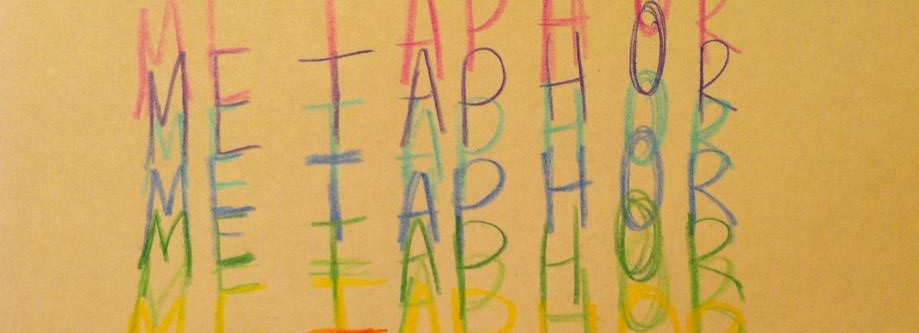
Courtesy of Hackernoon.
This post is the second in a series about an infographic project in “Teaching Composition,” a course led by former Brittain Fellow Dr. Anna Ioanes at the University of St. Francis. Read Part One here.
Part Two: Writing is a Beast; or, Visualizing Metaphors
When we teach students to write, is it best to focus on rules, or on personal expression? On the one hand, if we focus on the rules and conventions of writing in English, we equip students to use and manipulate those conventions, to articulate their own ideas in familiar forms. On the other hand, a focus on rules can shake students’ confidence in their writing and stifle their voices. If students write in their own voices, unhampered by the need to be “correct,” they can enjoy writing and develop a natural ear for language. But if they don’t learn the rules, they won’t know how to punctuate sentences or spell words! Sure, their writing might be an expression of their feelings, but it won’t be comprehensible to their readers! On the other hand…
The debate between rules and expression has a long history in the field of Composition Studies, the area of English devoted to the study of how writing is learned and taught. One of our first readings in English 318: “Teaching Composition” explored the poles of this debate as it is taking place in high school English instruction, and throughout the semester, we returned to these questions again and again: How do we help students cultivate attention to the complexity of language while also teaching them to produce readable sentences, paragraphs, and essays? How do we teach with an awareness that our taste in writing is subjective, that maybe writing happens somewhere between writer and reader, that we cannot know or control how our audience will respond?
An encyclopedic command of grammar, genre conventions, and citation can only take writers so far in their journey through the dense relationships between writer, text, and reader. Language is slippery like a seal, proliferating like so many rabbits. And if language works in often unpredictable ways, shaping itself to the specific situation in which it is being used, then writers can never really be in command of language. One of the authors on our syllabus, James Seitz, puts it this way: “The story of acquiring more power as a writer is not, as composition often implies, simply that of gaining greater control over language, but also a story of seeing where a lack of control will take you. In other words, much of what happens in the course of writing is vicarious: we don’t know what it is that leads us to where we go” (292). Arguing that writing teachers should embrace the seal-like and rabbit-like qualities of language, Seitz reminds us that metaphors are at the heart of how writing makes meaning.

As Allee Hernandez and David Hensley illustrate here, metaphors can act like wild beasts.
One of our infographic projects focuses on Seitz’s essay, “Composition’s Misunderstanding of Metaphor,” using images and other elements of visual design to show how central metaphors are to how we think and write. The creators of this infographic, Allee Hernandez and David Hensley, took on the daunting task of translating Seitz’s complex argument into infographic form. In doing so, they deepened their engagement with the reading and combined images and text to help other students understand how metaphor is the heart of writing.
Here’s how David and Allee described their infographic:
The main purpose of our infographic was to provide a supplementary guide for those who are reading Seitz’s “Composition’s Misunderstanding Of Metaphor,” specifically future teachers of composition studies. Seitz’s article delved into some very heavy philosophical concepts, and we felt that engaging with a more simplified run through of his basic arguments could lessen the difficulty of reading his article and comprehending his larger arguments. Since the main point of his article is to elaborate on the ways in which metaphor structures some of our most basic concepts and since metaphor itself is a very visual linguistic device, we felt that an infographic which uses some visual examples would make that point of his argument clearer. Our infographic is not intended to be a substitute for reading the article, but rather something that one would read either before or during their reading of Seitz’s article itself. However, we did attempt to summarize enough of Seitz’s argument in our infographic that one could engage with the infographic alone and hopefully get the basic gist of what Seitz was attempting to argue.

Infographic by Allee Hernandez and David Hensley.
Works Cited
Seitz, James. “Composition’s Misunderstanding of Metaphor.” College Composition and Communication, vol. 42, no. 3, October 1991, pp. 288-298. 292. JSTOR. http://www.jstor.org/stable/358072. Accessed 3 May 2018.

